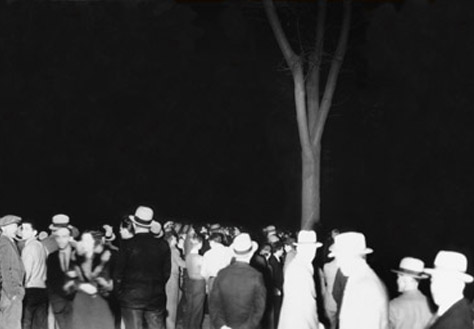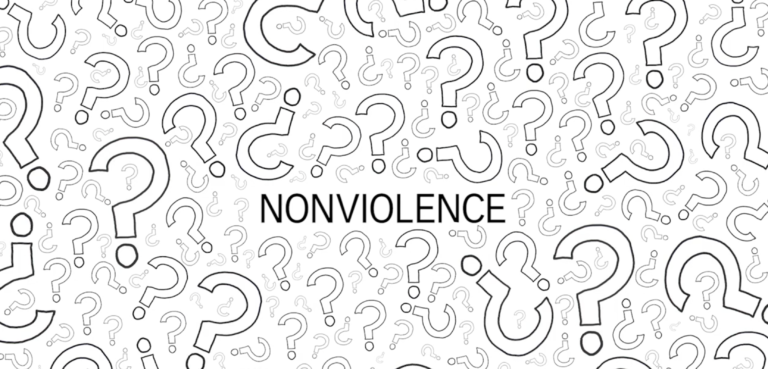This semester’s Resist Violence Community of Practice includes Mark Beauchamp (History), Susan Elmslie (English), Anick Legault (Psychology) and Alison Loader (3D Animation), along with the project’s Co-Leads Pat Romano (Humanities) and Kim Simard (Cin-Com)
Whether we were exploring rape culture, racism, bystander apathy, settler colonialism, or the militarized state of our planet, to name just some of the forms of violence that have been addressed by the members of this semester’s Resist Violence Community of Practice, each of us have had our share of doubts as to whether we sometimes might have done more harm than good. Have we left our students feeling overwhelmed or perhaps increasingly cynical about human nature? Could we have intensified their anger at the violence inflicted by particular people, with them losing the nuance that cruelty is an act that is far too human? Despite trigger warnings being used, was the material we used simply too provoking? Could we be adding to the overwhelming sea of voyeuristic imagery in our media culture, further desensitizing many of our students to the suffering of others. These are important questions that demand us to reflect more deeply on our teaching practices and the specific materials we are using to address the issue of violence. Are there some materials that are simply too much or perhaps, more accurately, deficient in some crucial ways?
To start our discussion, all of us identified materials that made us uneasy or those we thought went too far. Some of these focused on the actions of perpetrators, as was the case with a poem shared by Susan, Frank Bidart’s “Herbert White”. The poem, acclaimed for its humanizing portrayal of a perpetrator of crimes on a young girl’s body, left us all very shaky. Its value comes from reminding us how even the most despicable of actions are motivated by emotional needs that we all share. Susan wonders, though, if that is enough to justify using it with CEGEP or teenage students, and even worse whether it could even be titillating to someone who was psychologically unstable. Other than some expressions of guilt from White, saying at the poems’ end that he fails in getting it to seem “that somebody else did it,” the violence of the poem is chilling, not only for the violence done, but also as we see the victim through the perpetrator’s eyes. The problem is that this leaves us also viewing her essentially as someone, or perhaps more accurately something, of little significance.
Keeping our focus on the participants in violence, Anick brought up another concern that emerged from a classroom discussion of bystander apathy. One semester, she began with the widely known example from China, where a young child is repeatedly run over by cars on a narrow street. Even with attempts to balance the example with other cases closer to home, she discovered, particularly when screening the grainy video, instead of just providing a description, how sometimes efforts to shock students leave them too emotional to move beyond a feeling of anger towards “those other people who would do such things.”
While Alison wondered if there were any materials that she would completely rule out using in the classroom, she noted that any difficult materials needed to be used with a well-considered purpose in mind. All of us spoke of our desire to move our students emotionally, to engage their empathy, sense of outrage, even anger, with the hope of activating their ethical and political identities. But how do we do this in a context where so many of our students have been exposed to so much imagery of extreme violence? Mark brought up Susan Sontag’s argument that our increasing exposure to photos of atrocities from distant places serves to desensitize us to the pain of others. While generally in agreement, he suggested “(that) shock, while it exists, seems to me an important energy that needs to be harnessed.” In teaching about Black history in the US and Indigenous history in Canada, he often uses images of lynchings, residential schools and Emmitt Till, and given the wide accessibility of these images on the internet, argues that it is important to bring them into the classroom where the context and sacredness of these photos can be preserved.
Such images bring up important questions about how we should represent the victims of violence in our classroom discussions. While I often refer to the torture inflicted by some US soldiers in Iraq’s Abu Ghraib prison, I have never shown the photos themselves, but remain undecided about whether I would use a photography of a lynching from the late 19th–early 20th centuries.
Why would I never show a photograph from Abu Ghraib, or even give my students a reading in which the images were reprinted? Is it because the people directly harmed – those being tortured and their loved ones – are still alive? In part, yes. But the significance of what is being shown through the photos also seems inadequate to justify contributing to the further objectification of the real people being abused. In contrast, the images of black men and women being hanged in the southern US go further in revealing something about the larger societal complicity behind acts of cruelty inflicted on those we “other”. The white people shown in these photos are not simply those committing the acts but include a larger community of citizens who came out to enjoy the spectacle. I do though have doubts about whether we should use images that objectify others to this degree in our classrooms? As we were discussing this further in our Community of Practice, Mark told us of Ken Gonzales-Day’s brilliant photo series, Erased Lynchings, which literally removes the victims from the photos. As the artist states, “Rather than re-victimizing those murdered in such collective, and often pre-meditated acts of killing, the work [allows] the viewer to literally focus on the crowd – complete with their jeering and smiling faces.”
Our conversation then addressed the photo of Emmett Till, the fourteen-year old boy who was brutally murdered in Mississippi in 1955 while visiting his great-uncle. Again, showing the photo has a purpose that goes beyond merely showing our students yet another image of a victim of racialized violence. This is a photo that embodies human resilience and resistance; in a very real sense, we have been given consent to use this photo by Emmett’s grieving mother, Mamie Till Mobley, who insisted on leaving her son’s casket open so all could see his mutilated body in the hope that this would be the spark that would bring change.
Thus, there is much to think about when it comes to deciding how to present human suffering to our students. Depictions of victimhood tend to support world views of unequal human relationships, where “we” become the saviours of people deemed deserving of rescue. To resist this, we need to find portraits of complex individuals, people with dreams, desires and even flaws, people seeking to exercise agency even in the most difficult of situations, or at the very least, as philosopher Judith Butler implores, people whose lives are grievable. Two powerful examples of this can be found in the poem, “Ballad of Birmingham”, curtesy of Susan, and the recent documentary film, Dear Sama, which shows the reality of living in a war zone through the lens of a 26-year old Syrian woman. Kim also reminds us of the need to hear the voices of those who have been victimized, and not only rely on materials written by others, even if the portrayals show great respect and compassion. As an example, she offers The Ballad of Sexual Dependency in which Nan Goldin uses self-portraits that document her own struggles with addiction, sexual dependency and domestic abuse. A famous photograph of her own face, swollen and bruised taken hours after a sexual partner inflicted physical harm, is only the beginning of a profound story she shares: “The Ballad of Sexual Dependency is the diary I let people read,” Goldin wrote. “The diary is my form of control over my life. It allows me to obsessively record every detail. It enables me to remember.”
In sum, it is no easy task to create a classroom space where deep learning about the complexities of violence can occur and students encouraged to move past a sense of shock or outrage against the particular people inflicting the harm. Ever present is also the very real possibility that students react with little emotion at all to images or descriptions of extreme violence, already jaded by the sheer number of violent images that permeate their entertainment and social media culture. To breakthrough, we need to look for materials that are different and thus unexpected; ones that that ideally also suggest – either implicitly or explicitly – the possibilities for resistance and social change. For Susan, this can be done by poetry, which she argues carries a particularly strong emotional impact, but we can also think of powerful films, such as Denis Villeneuve’s Polytechnique, which Kim and I use in our classroom, forms of artistic activism, like the Erased Lynchings series that forces us to look beyond the act itself, and academic writings that seek to engage us at the same time intellectually and emotionally. In terms of more academic materials, there are many to be found, but two that come to my mind immediately are the work of anthropologist Carolyn Nordstrom, who in Shadows of War seeks to show us how the violence of war is “lived, felt, and died” (43) and a stunning chapter, “Wounding the Innocent,” by British historian Joanna Bourke that focuses on the actions of British and American militaries through the lens of the justifications they have given to kill civilians in war. All of these have the potential to move us emotionally but also engage us in a way that opens a door to deeper reflections on our complicity and responsibility in the light of what they reveal.
We must though keep in mind that students bring their own experiences and values into the classroom and we can’t control their emotional and intellectual responses. But if we are guided by our purpose and choose materials that stand out from the sea of voyeuristic violence that they are used to we might bring about the impact we are seeking. As one of my students wrote in an essay early this semester: “I used to be so numb to the violence in our lives because of how normalized it is, but through (the) reading [chapters “Violence” and “Peace” in Shadows of War] and the few classes we have had, I feel as though I have been able to sensitize myself to it once more.”


The fourth thing is that when campaigns are repressed — which is basically inevitable for those calling for major changes — they don’t either descend into chaos or opt for using violence themselves. If campaigns allow their repression to throw the movement into total disarray or they use it as a pretext to militarize their campaign, then they’re essentially co-signing what the regime wants — for the resisters to play on its own playing field. And they’re probably going to get totally crushed.
Like!! Really appreciate you sharing this blog post.Really thank you! Keep writing.